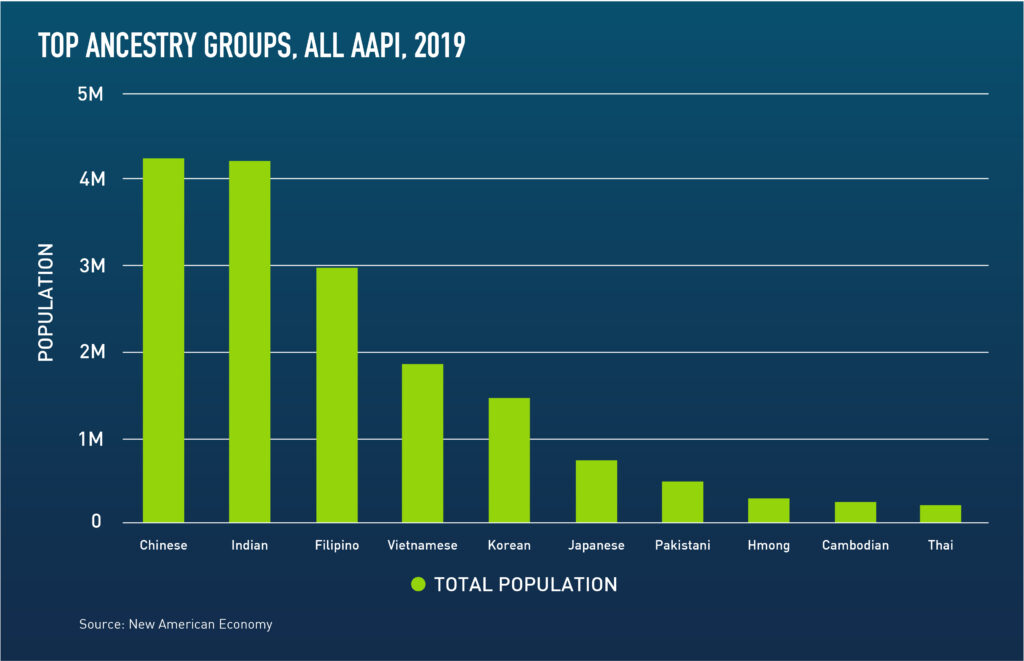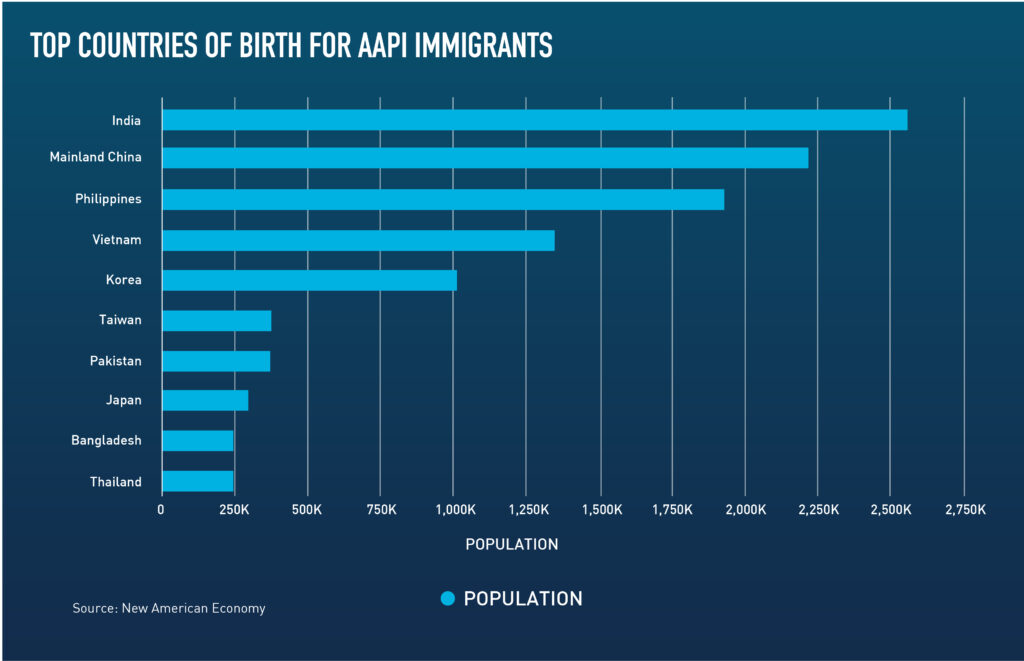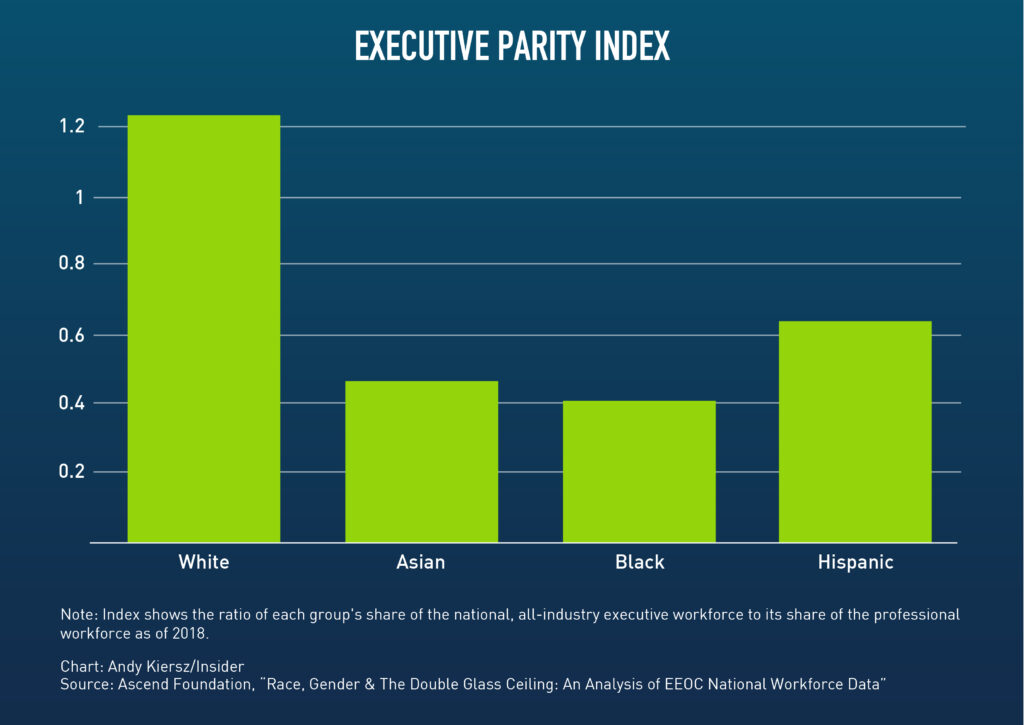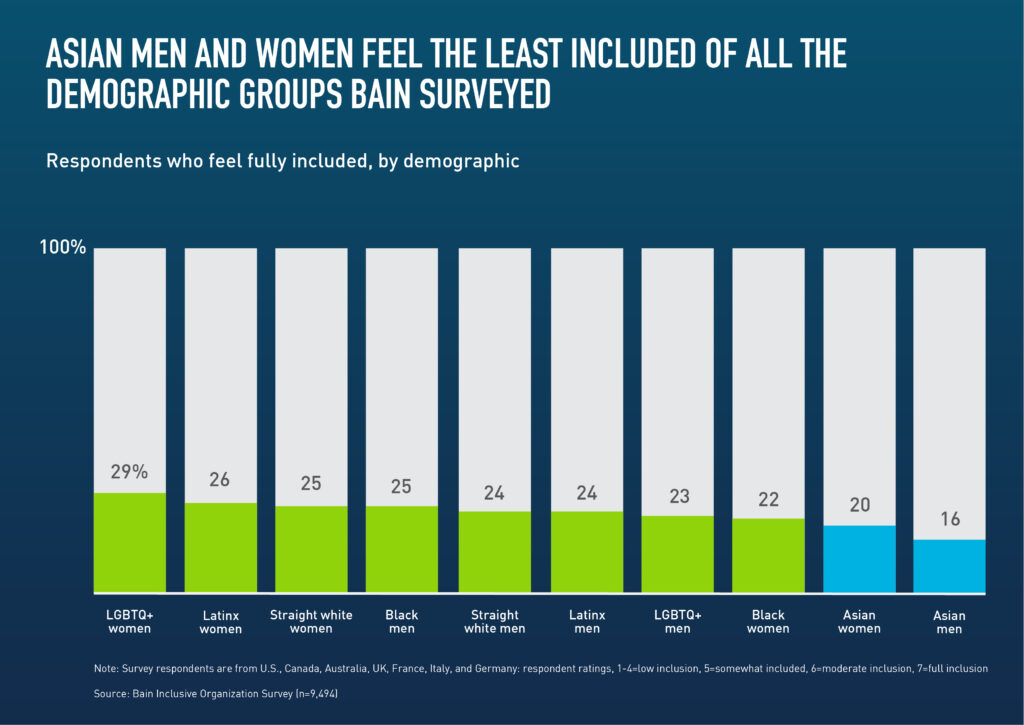At PeopleScout, we are committed to providing you with information to help guide you on your DE&I journey. We aim to cover a wide range of DE&I topics, including issues regarding BIPOC, the LGBTQ+ community, gender gaps, people with disabilities and more. In this article, we cover the history and importance of Asian American and Pacific Islander (AAPI) Heritage Month and offer advice and recommendations for employers looking to build more inclusive workplaces for AAPI workers.
Each year in the U.S., Asian American and Pacific Islander Heritage Month is observed during the month of May to recognize the many contributions and influence of the AAPI community to the history, culture and achievements of the U.S.
Starting in 1979, this recognition was initially observed from May 4 – May 10 as Asian/Pacific American Heritage Week. In 1992, U.S. Congress officially annually designated May as Asian/Pacific American Heritage Month. In 2009, Asian/Pacific American Heritage Month was renamed to AAPI Heritage Month, as we know it today.
AAPI Heritage Month is celebrated in May for two main reasons. The first is to commemorate the first known Japanese immigration to the U.S. on May 7, 1843. The second is to honor the completion of the transcontinental railroad on May 10, 1869—a construction that was largely aided by the labor of over 20,000 Chinese workers.
Asian Americans and Pacific Islanders have made a lasting impact on the history of the U.S. and will no doubt be just as instrumental in its future accomplishments and successes. But are these Americans receiving the recognition, respect and inclusion they deserve?
In this article, we’ll provide an overview of which ethnic groups are included in AAPI, discuss barriers this group may face in the workforce and share actionable steps your organization can take to foster inclusivity among AAPI employees.
Who are Asian Americans and Pacific Islanders?
According to the Asian Pacific Institute on Gender-Based Violence, AAPI can be defined as “all people of Asian, Asian American or Pacific Islander ancestry who trace their origins to the countries, states, jurisdictions and/or the diasporic communities of these geographic regions.”
Let’s break this down further. While keeping in mind that personal identifications can be complex and often overlapping, with not all Asian people identifying as American, and depending on one’s background and upbringing, consider this list of terms to help keep track of who might fall into the larger AAPI community:
- AAPI: Asian American and Pacific Islander. This term generally includes all people of Asian, Asian American or Pacific Islander descent.
- Asian: A person having origins in any of the original peoples of the Far East, Southeast Asia or the Indian subcontinent.
- East Asian: A person of Chinese, Taiwanese, Japanese, Korean or Mongolian descent.
- South Asian: A person of Indian, Bangladesh, Sri Lankan, Nepali or Pakistani backgrounds.
- Southeast Asian: A person of Filipino, Cambodian, Vietnamese, Lao, Indonesian, Thai or Singaporean descent.
- Central Asian: A person with origins in the original peoples of Kazakhstan, Kyrgyz Republic, Tajikistan, Turkmenistan and Uzbekistan.
- Pacific Islander: A person with origins in the original peoples of Polynesia, Micronesia and Melanesia.
- West Asian: A person with origins in the original peoples of Armenia, Azerbaijan, Bahrain, Cyprus, Georgia, Iraq, Israel, Jordan, Kuwait, Lebanon, Oman, Palestine, Qatar, Saudi Arabia, Syria, Turkey, United Arab Emirates or Yemen.
There is immense diversity among members of AAPI heritage, and their ancestry and origins vary across the U.S. Here are visuals of the top ancestry groups and top countries of birth for AAPI immigrants based on research from the New American Economy:


Asian Americans and Pacific Islanders in the Workforce
While the Asian American population is growing faster than any other group in the U.S., the same cannot be said for the rate at which this group is promoted into positions of leadership in organizations across the country.
- According to data from the EEOC, white-collar Asian American workers are the least likely group to be promoted into management roles—less likely than any other race.
- According to Bain & Company, while 9% of the professional workforce in the U.S. identifies as Asian, only 2% of CEOs do.
- The AAPI community suffers from high levels of income inequality, with AAPI workers in the top 10% of the income distribution earning nearly 10 times what AAPIs in the bottom 10% do.
- Insider shares a 2020 analysis of the C-suites at Fortune 500 and S&P 500 companies, finding that just 5.6% of the total executives in the study identified as Asian or Indian.

So, what’s the reason behind these massive gaps? In a nutshell: stereotypes.
AAPIs have often been mislabeled the “model minority,” a term that stems from a New York Times article published in 1966 which praised Japanese Americans for overcoming prejudice, respecting authority, achieving academic excellence and “subordination of the individual to the group.” And according to CNBC, the model minority myth “also paints Asians as a monolith, when in fact some 23 million Asian Americans trace their roots to more than 20 countries in East and Southeast Asia and the Indian subcontinent.”
Over the years, this description has come to stereotype all AAPI people as hardworking, smart, well-educated and faithful to their superiors. However, there are pitfalls to this idea—by placing Asian Americans on a pedestal for minority success in America, we have inadvertently made circumstances far worse for this community.
By characterizing this group as having a higher level of “success” than the typical immigrant or other racial/ethnic group, it glosses over and seeks to erase the struggles, barriers and different challenges and experiences AAPIs face. Moreover, the same descriptors that have come to define “model minority” have also deemed this group unfit for leadership roles and promotions, due to a perceived lack of creativity, ambition and confidence—painting AAPIs as submissive and not “leadership material.”
What’s more, new research finds that Asian employees report feeling the least included of all demographic groups in the workplace, including Black and LGBTQ+ workers. This research from Bain found that only 25% to 30% of employees across all geographies, industries, and demographic groups say that they feel fully included at work, with only 16% of Asian men and 20% of Asian women feeling the same.

Strategies to Foster AAPI Diversity, Equity & Inclusion
Spread Awareness
Because AAPIs have for so long been characterized as the “model minority,” non-AAPIs may not realize the extent of the barriers to which this group faces daily in the workforce. Employers should spread awareness of the leadership gap AAPI workers face and fold AAPI-related topics into organizational diversity and inclusion efforts. This can include bias training and learning programs to help make stakeholders and employees aware of the distinct obstacles facing AAPI workers.
Target Recruitment
The first step in building a diverse workforce is ensuring your organization is inclusive of all types of people—including AAPIs. According to the EEOC, one of the most common barriers for AAPI employees and applicants is a lack of targeted recruitment. Employers can combat this by establishing targeted recruitment plans that include goals and deadlines for attracting AAPI candidates, and by partnering with universities and organizations with a high percentage of AAPI students or professionals looking to advance in their careers. Organizations should also be sure to monitor and modify the plan as needed. Talent technologies like PeopleScout’s Affinix can help make this process simple with diversity dashboards that track progress toward specific goals.
For more on diversity recruiting strategies, check out this PeopleScout article: The Future of Diversity Recruiting: Reevaluating Traditional Methods & Questioning Accepted Wisdom.
Invest in AAPI Growth and Development
For employers looking to diversify their leadership, developing a program that specifically invests in AAPI employees is a great way to start. Consider identifying top-performing individuals and providing them with opportunities to demonstrate their leadership abilities (i.e., more responsibility, a big project, presentation, etc.). Organizations can also provide these employees with mentorship and designated training paths to encourage promotion and growth.
Create Employee Resource Groups
Employee resource groups, or ERGs, are a great way to help employees within an organization build community and share a common cause—such as interests, backgrounds and identities. An ERG focused around AAPIs can help these employees feel at home within an organization and can also serve as a community for non-AAPIs who want to learn more about the experiences of this diverse group. ERGs are also a great way to improve retention rates, because when employees truly feel included, they are more likely to stay at an organization.
At PeopleScout and the broader TrueBlue organization, we are proud to have the Asian Collective of Employees (ACE) ERG, a trustworthy forum where AAPIs and allies can share ideas, perspectives and professional experiences, to accelerate business and career growth, and increase cultural awareness.
Elevate AAPI Voices
With a rise in anti-Asian hate crimes following the COVID-19 pandemic, AAPIs were abruptly reminded that their sense of belonging in a predominately white society is often conditional. And with the Stop AAPI Hate National Report finding that businesses are the primary site of discrimination at 35%, organizations can make a powerful impact by addressing and acknowledging incidents and offering open forums for discussion among employees. By amplifying AAPI voices and perspectives, AAPI employees will feel comfortable sharing their thoughts, feelings and experiences in a safe space while knowing their employer cares. In addition, organizations can host speaker events featuring AAPI leaders and top performers within the company to highlight contributions and allow other AAPIs to see examples of success within the workplace.
Celebrate AAPI Month
AAPI month is a great opportunity for organizations to celebrate AAPI heritage and contributions and show employees that their unique cultural differences are valued. Consider these ideas for celebrating AAPI Month within your organization:
- Host an AAPI author book club
- Order lunch from a local AAPI restaurant
- Raise funds for an AAPI nonprofit
- Host an AAPI history and trivia night
- Spotlight AAPI employees on internal channels
Asian American DE&I as a Continuous Journey
The U.S. continually becomes more diverse, and so do organizations and the people in them. For organizations to stay competitive, diversity, equity and inclusion are non-negotiable. A truly diverse company will include people from all backgrounds at all levels of the organization—including in leadership roles. And when candidates and customers see that level of diversity, they’ll be more likely to invest their time and resources with those businesses.
However, diversity without inclusion does nothing for people nor businesses. In order to retain your diverse employees, you’ll need to understand who they are, celebrate their heritage and invest in their growth. It is our responsibility as employers to identify groups who need amplification in the workforce—like AAPIs—and to foster long-term inclusion, representation and respect.



